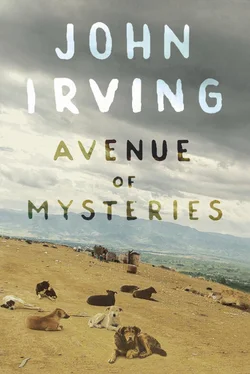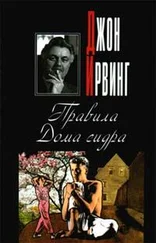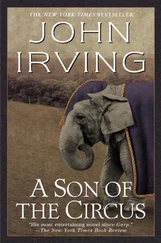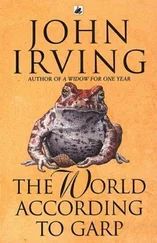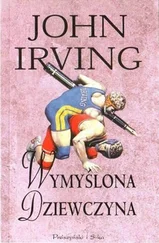This was on purpose, and entirely Ignacio’s doing. As a young man, the lion tamer had traveled to India and had first seen the skywalk at a circus there. That is where the lion tamer also got the idea of using children as acrobats. Ignacio acquired the no-net idea from a circus he saw in Junagadh, and from one he’d seen in Rajkot. No net, child performers, a high-risk act — the skywalk proved itself to be a real crowd-pleaser in Mexico, too. And because Juan Diego hated Ignacio, he had traveled to India — he wanted to see what the lion tamer had seen; he needed to know where Ignacio’s ideas came from.
The came-from part was a major aspect of Juan Diego’s life as a writer. A Story Set in Motion by the Virgin Mary, his India novel, had been about where everything “comes from”—in that novel, as in much of Juan Diego’s childhood and adolescence, a lot came from the Jesuits or the circus. Yet no novel by Juan Diego Guerrero was set in Mexico; there were no Mexican (or Mexican-American) characters in his fiction. “Real life is too sloppy a model for good fiction,” Juan Diego had said. “The good characters in novels are more fully formed than most of the people we know in our lives,” he would add. “Characters in novels are more understandable, more consistent, more predictable. No good novel is a mess; many so-called real lives are messy. In a good novel, everything important to the story comes from something or somewhere.”
Yes, his novels came from his childhood and adolescence — that was where his fears came from, and his imagination came from everything he feared. This didn’t mean he wrote about himself, or about what happened to him as a child and adolescent — he didn’t. As a writer, Juan Diego Guerrero had imagined what he feared. You could not ever know enough about where real people came from .
Take Ignacio, the lion tamer — his depravity, in particular. He could not be blamed on India. No doubt he’d acquired his lion-taming skills at the Indian circuses, but taming lions wasn’t an athletic ability — it definitely wasn’t acrobatic. (Lion-taming is a matter of domination; this appears to be true in the case of male and female lion tamers.) Ignacio had mastered how to look intimidating, or he had that quality before he ever went to India. With lions, of course, the intimidation part was an illusion. And whether or not the domination worked — well, that depended on the individual lion. Or the individual lionesses, in Ignacio’s case — the female factor.
The skywalk itself was mostly a matter of technique; for skywalkers, this entailed mastering a specific system. There was a way to do it. Ignacio had seen it, but the lion tamer wasn’t an acrobat — he’d only married one. Ignacio’s wife, Soledad, was the acrobat — or former acrobat. She’d been a trapeze artist, a flyer; physically, Soledad could do anything.
Ignacio had merely described how the skywalk looked ; Soledad was the one who taught the young-women acrobats how to do it. Soledad had taught herself to skywalk on that safe ladder in the troupe tent; when she’d mastered it without falling, Soledad knew she could teach the girl acrobats how to do it.
At Circus of The Wonder, only young women — just the girl acrobats, of a certain age — were trained to be skywalkers (The Wonders themselves). This was also on purpose, and entirely Ignacio’s doing. The lion tamer liked young women; he thought that prepubescent girls were the best skywalkers. Ignacio believed that if you were in the audience, you wanted to be worried about the girls falling, not thinking about them sexually; once women were old enough for you to have sexual thoughts about them — well, at least in the lion tamer’s opinion, you weren’t so worried about them dying if you could imagine having sex with them.
Naturally, Lupe had known this about the lion tamer from the moment she’d met him — Lupe could read Ignacio’s mind. That first meeting, upon the dump kids’ arrival at La Maravilla, had been Lupe’s introduction to the lion tamer’s thoughts. Lupe had never read a mind as terrible as Ignacio’s mind before.
“This is Lupe — the new fortune-teller,” Soledad was saying, introducing Lupe to the young women in the troupe tent. Lupe knew she was in foreign territory.
“Lupe prefers ‘mind reader’ to ‘fortune-teller’—she usually knows what you’re thinking, not necessarily what happens next,” Juan Diego explained. He felt insecure, adrift.
“And this is Lupe’s brother, Juan Diego — he’s the only one who can understand what she says,” Soledad continued.
Juan Diego was in a tent full of girls close to his age; a few were as young as (or younger than) Lupe, only ten or twelve, and there were a couple of fifteen- or sixteen-year-olds, but most of the girl acrobats were thirteen or fourteen. Juan Diego had never felt as self-conscious. He was not used to being around athletic girls.
A young woman hung upside down from the skywalking ladder at the apex of the troupe tent; the tops of her raw-looking bare feet, inserted in the first two rope rungs, were flexed at rigidly held right angles to her bare shins. She swung back and forth, her forward momentum never changing, as she stepped out of one rope rung, rhythmically moving ahead to the next — and, never losing her rhythm, to the next. There were sixteen steps in the skywalk, start to finish; at eighty feet, without a net, one of those sixteen steps could be your last. But the skywalker in the acrobats’ troupe tent seemed unconcerned; an insouciance attended her — she looked as relaxed as her untucked T-shirt, which she held to her chest (her wrists were crossed on her small breasts). “And this, ” Soledad was saying, as she pointed to the upside-down skywalker, “is Dolores.” Juan Diego stared at her.
Dolores was La Maravilla of the moment; she was The Wonder in Circus of The Wonder, if only for a fleeting half-second — Dolores would not be prepubescent for long. Juan Diego held his breath.
The young woman, who was named for “pain” and “suffering,” just kept skywalking. Her loose gym shorts revealed her long legs; her bare belly was wet with sweat. Juan Diego adored her.
“Dolores is fourteen,” Soledad said. (Fourteen going on twenty-one, as Juan Diego would long remember her.) Dolores was beautiful but bored; she seemed indifferent to the risk she was taking, or to — more dangerously — any risk. Lupe already hated her.
But the lion tamer’s thoughts were what Lupe was reciting. “The pig thinks Dolores should be fucking, not skywalking,” Lupe babbled.
“Who should she be—” Juan Diego started to ask, but Lupe wouldn’t stop babbling. She stared at Ignacio.
“ Him. The pig wants her to fuck him — he thinks she’s done with skywalking. There’s just no other girl who’s good enough to replace her — not yet,” Lupe said. She went on to say that Ignacio believed it was a conflict if The Wonder gave him a hard-on; the lion tamer found it impossible to fear for a girl’s life if he also wanted to fuck her.
“Ideally, as soon as a girl gets her period, she shouldn’t be a skywalker,” Lupe elaborated. Ignacio had told all the girls that the lions knew when the girls got their periods. (Whether this was true or not, the girl acrobats believed it.) Ignacio knew when the girls had their periods because they became anxious around the lions or avoided the lions altogether.
“The pig can’t wait to fuck this girl — he thinks she’s ready, ” Lupe said, nodding to the serene, upside-down Dolores.
“What does the skywalker think?” Juan Diego whispered to Lupe.
“I’m not reading her mind — La Maravilla has no thoughts right now,” Lupe said dismissively. “But you’re wishing you could have sex with her, too — aren’t you?” Lupe asked her brother. “Sick!” she said, before Juan Diego could answer her.
Читать дальше
